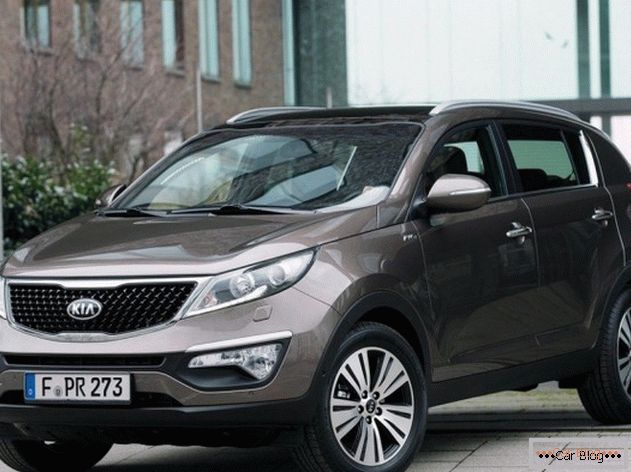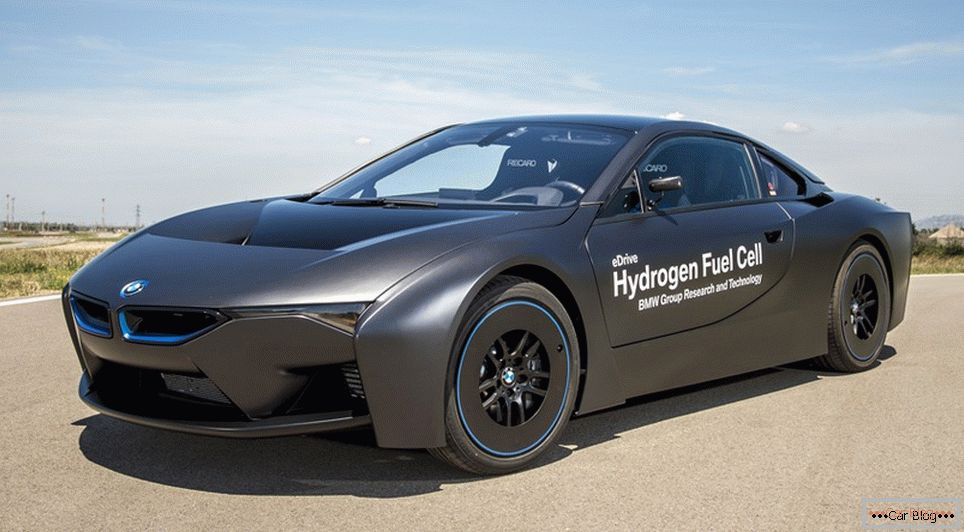 For more than thirty years, the automobile company BMW has been developing engines that use hydrogen as their fuel. She began her first research in this area in 1984. Despite the long period of work with alternative power units, up to serial production of hydrogen cars still far. BMW plans to launch production lines only by 2020. And now the Germans, not without pride, demonstrate the latest prototypes of fuel cell vehicles, so-called "mules", which are regularly produced for testing purposes.
For more than thirty years, the automobile company BMW has been developing engines that use hydrogen as their fuel. She began her first research in this area in 1984. Despite the long period of work with alternative power units, up to serial production of hydrogen cars still far. BMW plans to launch production lines only by 2020. And now the Germans, not without pride, demonstrate the latest prototypes of fuel cell vehicles, so-called "mules", which are regularly produced for testing purposes.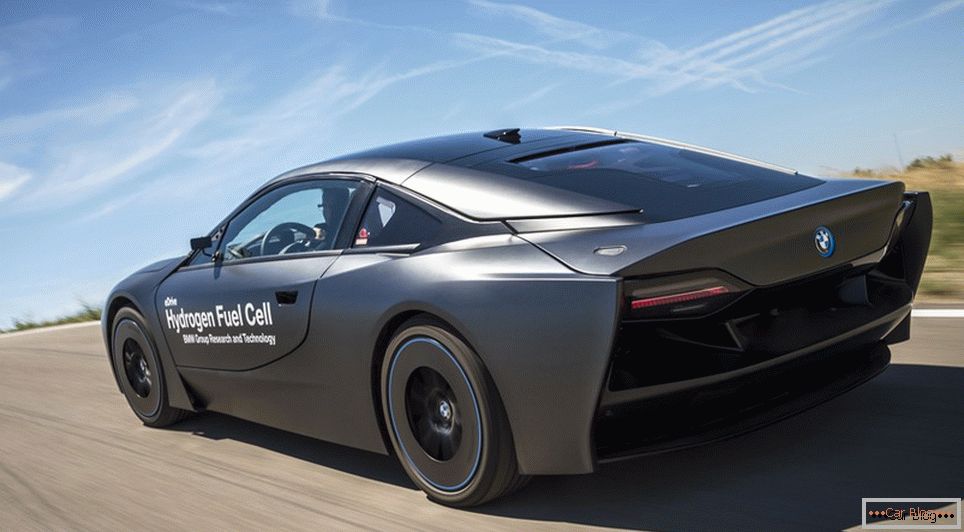 BMW i8 in the "hydrogen" version is one of these mules. With the mass-produced "namesake," this prototype has little in common, its body is made of practically one carbon, which allows you to significantly lose the overall weight of the car. According to rumors, the “mule” chassis was assembled three years ago, while working with the BMW i8, but now it has been slightly adapted for specific requests of the hydrogen engine. In place of the benzomotor, a converter was placed, in the tanks of which hydrogen combines and reacts with oxygen. The rear wheels are leading, driven by an electric motor. The unit at full power can develop the efforts of 242 horses.
BMW i8 in the "hydrogen" version is one of these mules. With the mass-produced "namesake," this prototype has little in common, its body is made of practically one carbon, which allows you to significantly lose the overall weight of the car. According to rumors, the “mule” chassis was assembled three years ago, while working with the BMW i8, but now it has been slightly adapted for specific requests of the hydrogen engine. In place of the benzomotor, a converter was placed, in the tanks of which hydrogen combines and reacts with oxygen. The rear wheels are leading, driven by an electric motor. The unit at full power can develop the efforts of 242 horses. 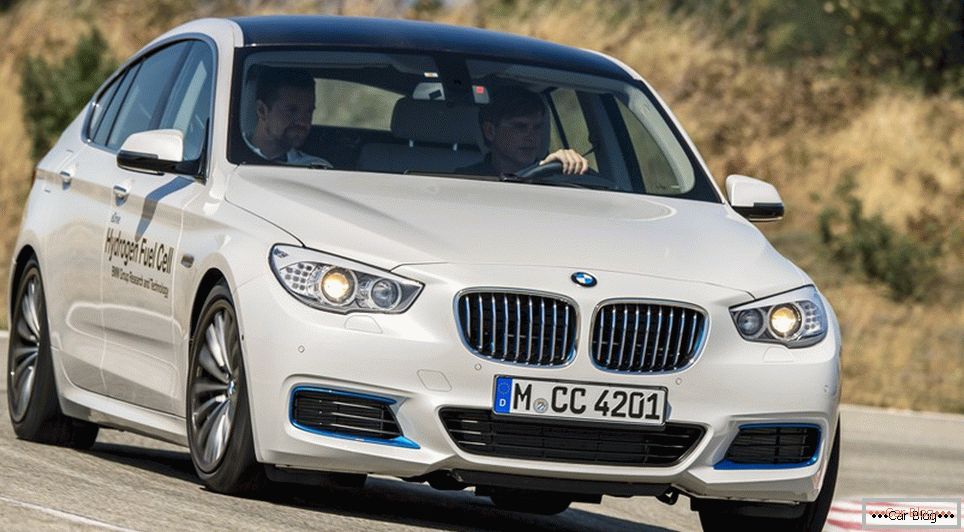 Prototype BMW 5 Series GT Fuel Cell outwardly very similar to the model of the same name without the prefix "Fuel Cell", and therefore more associated in the minds of BMW fans with a real car. Under the hood, he has a hydrogen engine, which the Germans developed together with Japanese engineers of Toyota. Developers had to work hard to compactly install an alternative fuel tank near the engine. Rear wheel drive car. Here, the electric motor is more modest than the BMW i8 concept, only 199 hp.
Prototype BMW 5 Series GT Fuel Cell outwardly very similar to the model of the same name without the prefix "Fuel Cell", and therefore more associated in the minds of BMW fans with a real car. Under the hood, he has a hydrogen engine, which the Germans developed together with Japanese engineers of Toyota. Developers had to work hard to compactly install an alternative fuel tank near the engine. Rear wheel drive car. Here, the electric motor is more modest than the BMW i8 concept, only 199 hp. 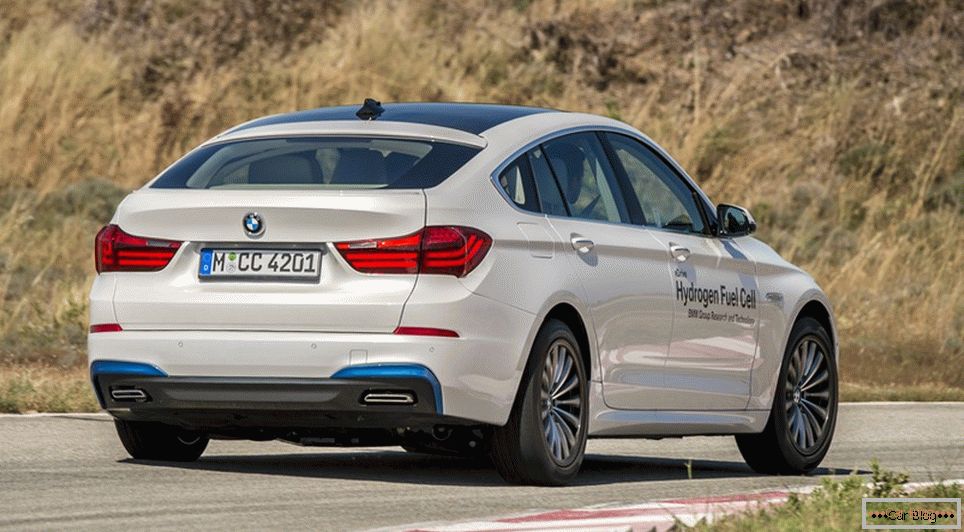 Tricky hydrogen fuel tank design BMW 5 Series GT Fuel Cell allows it to fill with liquefied hydrogen at a temperature of minus 220 degrees Celsius. Due to such a low temperature, about seven liters of fuel get into the tank. Why such a hellish temperature? Everything will become clear if you know that at ordinary temperature, only two with a penny liters of hydrogen fit into this fuel tank. On one such tank filled the car can travel seven hundred kilometers. The seven-hundred-kilometer mileage will empty the pocket of the car owner, given the current cost of hydrogen, worth about 4300 rubles.
Tricky hydrogen fuel tank design BMW 5 Series GT Fuel Cell allows it to fill with liquefied hydrogen at a temperature of minus 220 degrees Celsius. Due to such a low temperature, about seven liters of fuel get into the tank. Why such a hellish temperature? Everything will become clear if you know that at ordinary temperature, only two with a penny liters of hydrogen fit into this fuel tank. On one such tank filled the car can travel seven hundred kilometers. The seven-hundred-kilometer mileage will empty the pocket of the car owner, given the current cost of hydrogen, worth about 4300 rubles.
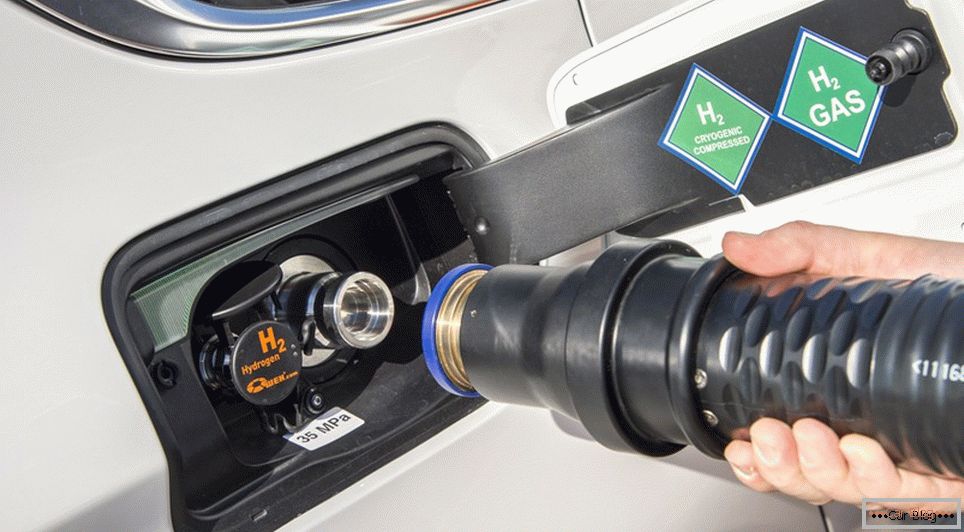 Prototype 5 Series GT Fuel Cell is the most economical fuel consumption car in its class. He overtook even the former leader - Toyota Mirai. In addition to BMW, Audi also works with hydrogen. It is going to convert the Q6 crossover to hydrogen soon.
Prototype 5 Series GT Fuel Cell is the most economical fuel consumption car in its class. He overtook even the former leader - Toyota Mirai. In addition to BMW, Audi also works with hydrogen. It is going to convert the Q6 crossover to hydrogen soon.

